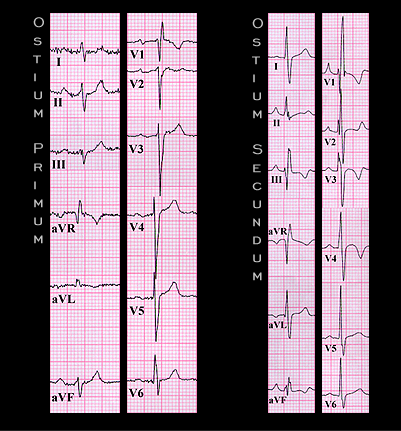Right bundle branch block with left axis deviation of the initial portion of the QRS complex occurring in a patient with a systolic murmur should suggest an ostium primum atrial septal defect.

The ECG shown on the left is from a 24 year old female with Down’s syndrome and a systolic murmur with widely split 2nd heart sound, caused by an ostium primum atrial septal defect. The terminal QRS forces in this patient are directed to the right, anteriorly and slightly inferiorly, as they were in the patient with the secundum type atrial septal defect, whose ECG is shown again on the right. But note that in the tracing on the left, the initial portion of the QRS complex, with the R waves in leads I and aVL and the S waves in leads III and aVF, is directed to the left and superiorly with a frontal plane axis of +30 degrees.
